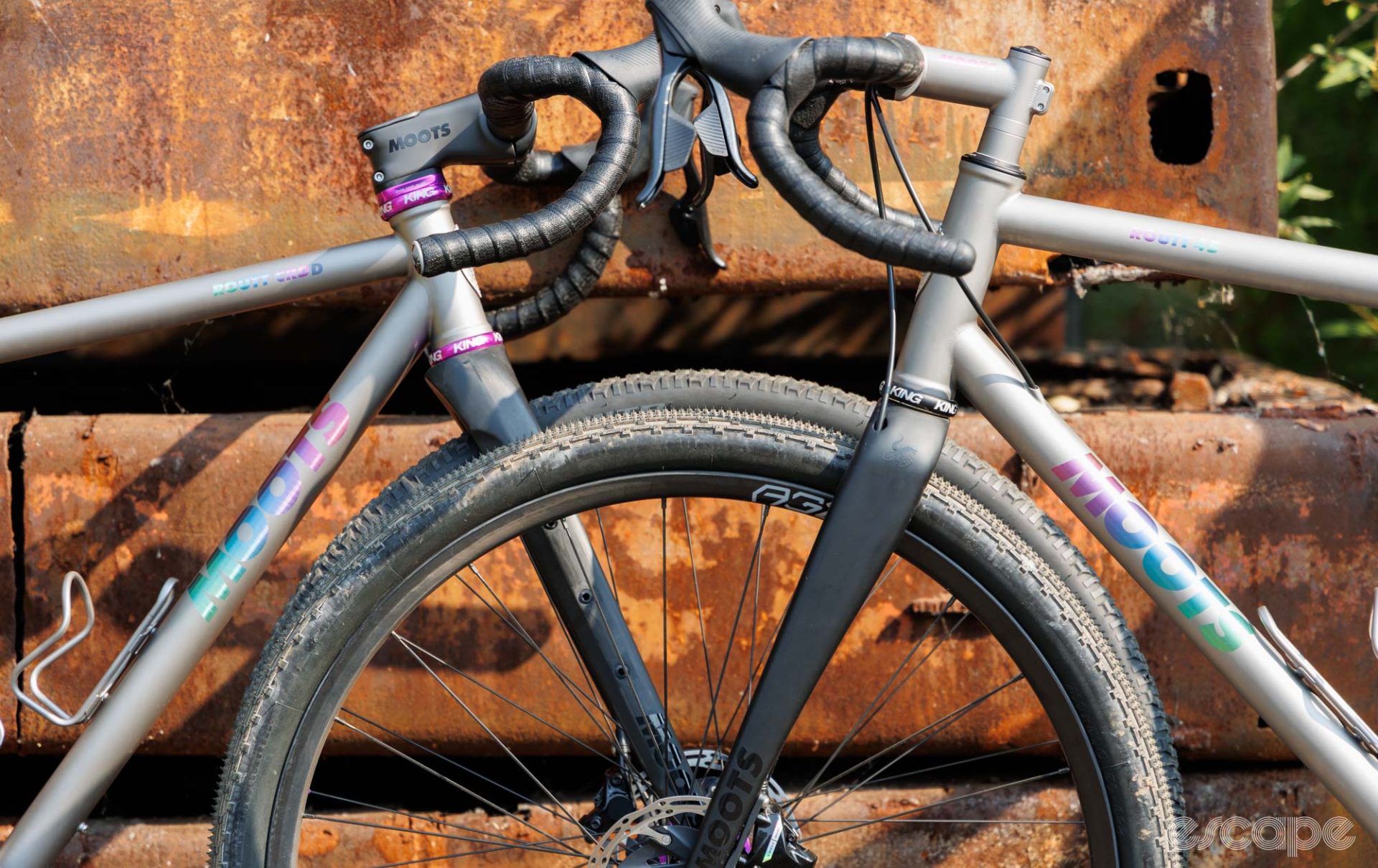The weekend just past saw SBT GRVL run through Steamboat Springs in Colorado, and local custom titanium brand, Moots, was there with a prototype big-wheeled gravel bike. Now that same bike is at the MADE Bike Show, and Moots is clearly getting lots of practice talking about it.
Named the Routt CRDD, the bike looks much like the company’s regular integrated cockpit and cabled gravel racer. However, there’s one big difference: the wheels it’s rolling on are not the usual 700C but a larger prototype 750D size from WTB.
Ok, so I’m a day late to the news of this weird new wheel size, but hopefully, I can add a little more insight into why this larger diameter rim size is now being looked at as a possible next big thing (pun intended).
Why?!
The common 700C-sized rim that is used across road, 29er mountain bike, and most newer gravel bikes offers a Bead Seat Diameter (BSD) of 622 mm. By comparison, 750D grows that measurement to 660 mm. It’s enough of a change for a 700c rim to fit inside that of a 750D, and for a given width of tyre you mount to it, the measured diameter grows by that margin, too.
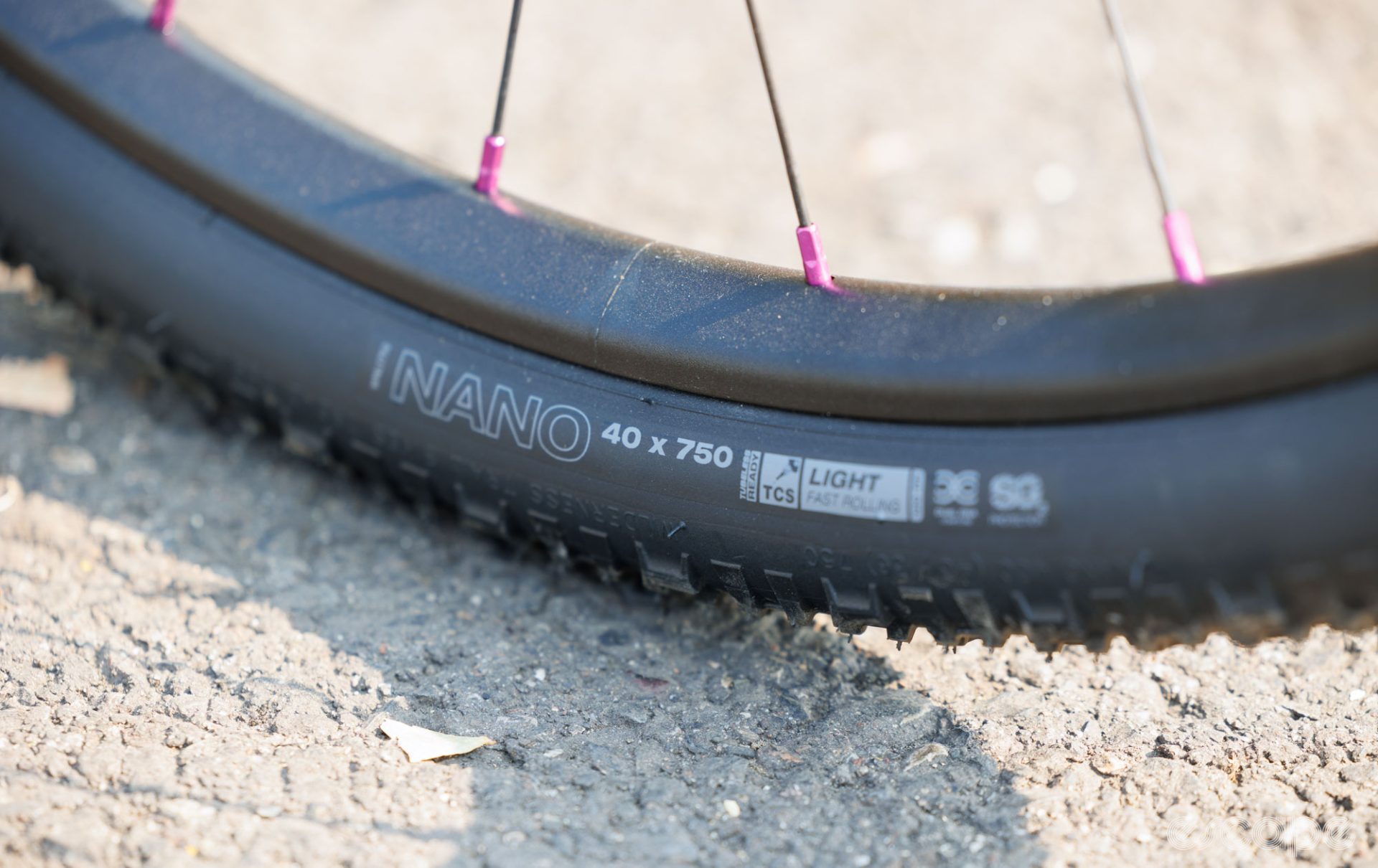
With that extra 38 mm of diameter, the 750D concept effectively matches the inflated diameter of a more voluminous and wider 29 x 2.1″ mountain bike tyre, albeit with a skinnier 40 mm (ish) gravel tyre.
“We see the main benefit of this wheel size to be the contact patch,” said Nate Bradley, Moot’s chief frame designer turned company president. “We’re lengthening the contact patch rather than widening it. This way you don’t get the drag of having to push a wider tyre through a soft surface, but you get the length of the contact patch to float through the soft surface. You get some stability, you get some additional float.”
The concept of running a larger-diameter wheel is centuries old. With a larger wheel, the roll-over ability is greatly improved, with the wheel less likely to stall on obstacles. Reducing that stalling effect translates to carrying momentum and, therefore, speed. Meanwhile, the added tyre contact patch brings other benefits. These same concepts were what led the 29er wheel to replace the smaller 26-inch wheel as the common choice within most disciplines of mountain biking.
Relax, it’s not in production. Yet
Bradley explained that it’s much more than a concept. “We’ve talked about this for a long time with WTB, and we now have two tyres. The Nano (not-so-coincidently, the same model that WTB kickstarted 29er mountain bikes with) in the 40 mm, and a Byway tread in a 34 mm. WTB is rolling aluminium KOM i25 rim in this larger diameter.”
WTB has said the tyres are currently a prototype product that they’ll only put into production if and when there is enough OEM (Original Equipment Manufacturer) demand. An order from a custom brand the size of Moots wouldn’t be enough to justify a production run, but clearly, there are others quietly looking at it, including murmurs of some of the largest bike brands.
Either way, there’s enough merit to this idea that WTB has invested in having tyre moulds cut for these two models. Meanwhile, Escape Collective has heard from another major tyre manufacturer that while the idea of 750D isn’t to be discounted, the size is too large for their existing curing machines and would therefore be a considerable investment to action, one that goes far beyond the cost of just new tyre moulds.
Business is business; such investments will only happen if enough demand exists.
How Moots is handling the bigger wheels
Bigger wheels introduce new design challenges, and the bike industry is still solving for problems related to larger tyre sizes on 700C wheels. And here we are, with wholly new challenges once more.
Ok, it’s worth noting that 750D isn’t Moots’ idea but rather a concept that came their way, and being a custom bike brand, they’re of course well placed to test and tweak such new ideas.
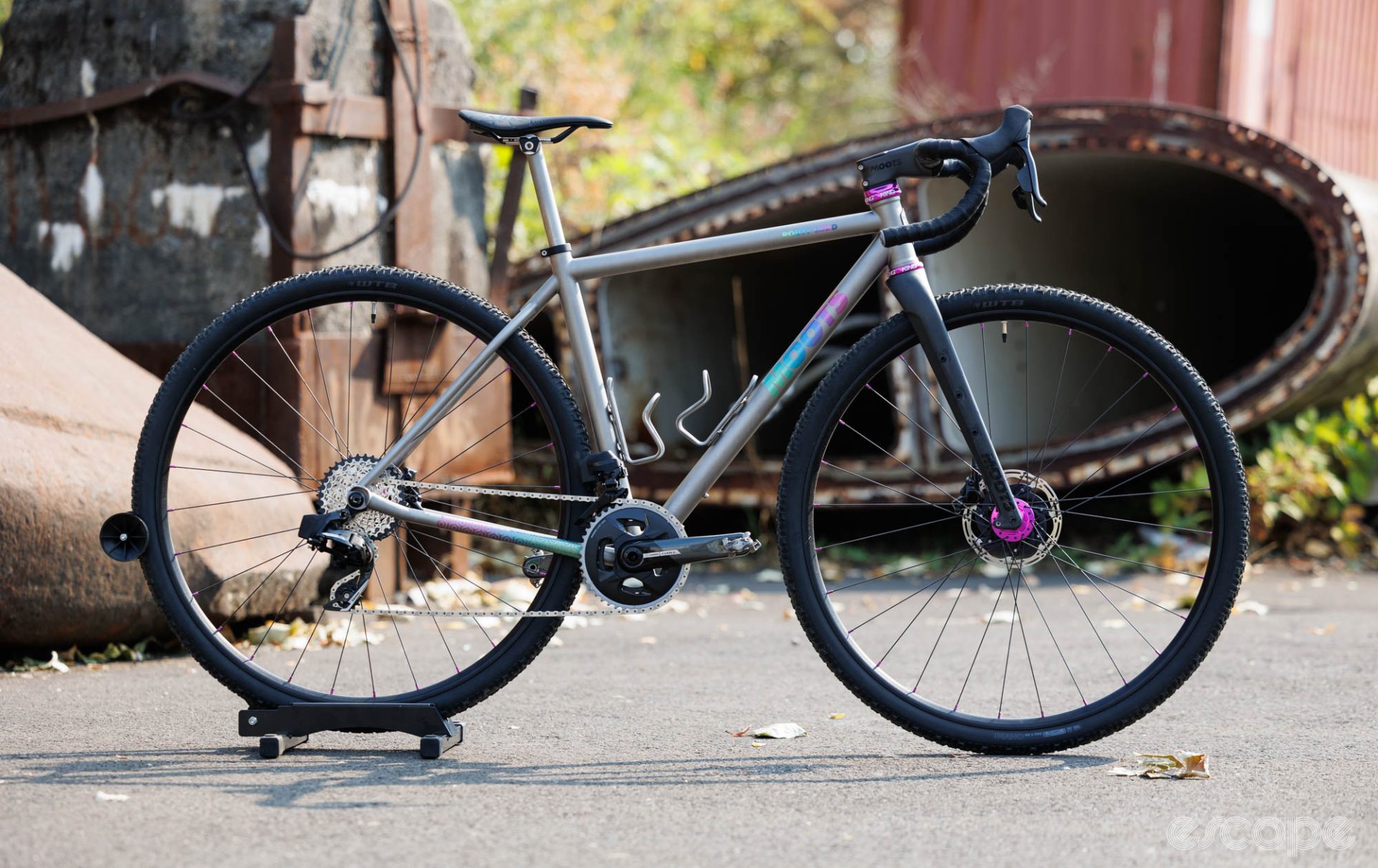
“Some highlights on the geometry to get it to this larger [wheel] size,” shared Bradley. “We went 20 mm longer on the chainstays than the regular Routt CRD, we came down on average [depending on the frame size] by about 9-10mm on the bottom bracket drop. And we decreased the trail just slightly to add more responsiveness.” That trail figure is around 57 mm on this displayed 54 cm bike.
Moots also has its own fork that works with the larger wheel. According to Bradley, this fork offers room for a 29 x 2.1in tyre (approx 700c x 54 mm), and that it so happens also to fit a 750D x 40 mm tyre perfectly. The head tube length has been shortened to compensate for this larger fork.
“It’s a carbon fork with a 420 mm (approx) axle-to-crown. It’s 25 mm longer than our gravel fork, and this is really for a project we’re working on that has the ability to be rigid while having geometry corrected for a 700c gravel suspension fork, such as the MRP Baxter 60 mm.”
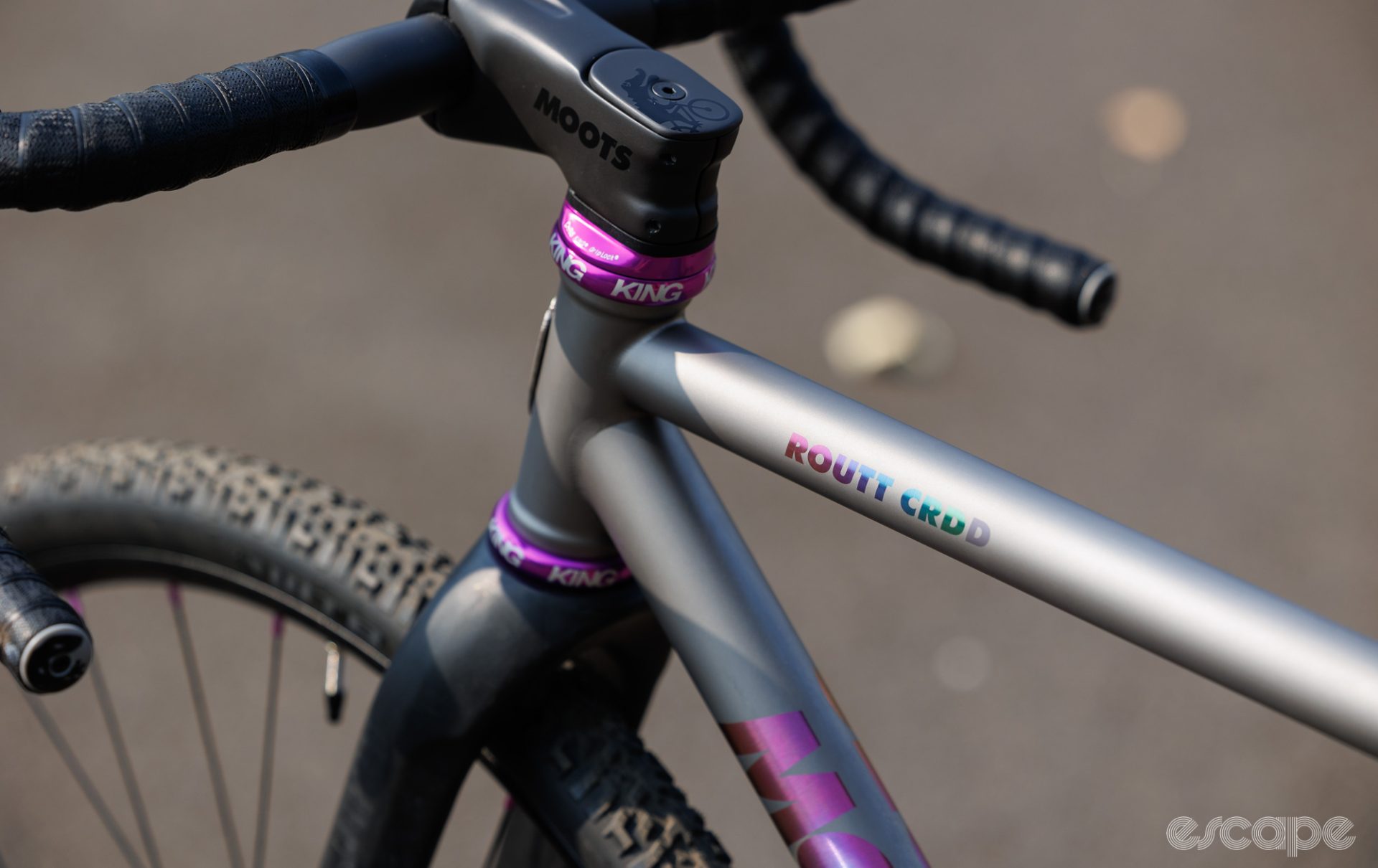
Another design factor is the impact a larger diameter wheel has on the bike’s gear roll-out. Moots built the bike with SRAM AXS Wide 2x groupset that provides an ultra-wide 516% gear range.
This prototype Routt CRDD currently features regular 142 rear and 100 mm width axle spacing. When asked whether mountain bike Boost spacing may make sense in this application, Bradley quickly suggested that he’s not at all opposed to it and that the company already has the Routt ESC with Boost spacing. Oh yes, a new wheel size could indeed lead to other instability of commonly agreed-upon parts.
The Routt CRDD has toe overlap in the displayed 54 cm frame size. “We build our racier gravel bikes with toe overlap (with larger tyres) anyway because we’re not looking to compromise that sportier and tighter feel. So we didn’t want to extend the front end too much, we wanted that trail figure to compensate for the bigger wheel, and we want this to ride comparably to our Routt CRD so we can closely compare the 700c and 750D wheel sizes.”

Where does Moots see this going?
According to Bradley, he sees this wheel size as something for the pointier and more performance-minded end of gravel. “The racier end, where you get it up to speed and can keep it up to speed.”
For most other styles of riding, bigger wheels bring new compromises to the bike’s agility, geometry compromises, and limitations over tyre volume. Bradley also added that the larger diameter of course increases tyre and wheel weight, which will be a barrier to many, too.
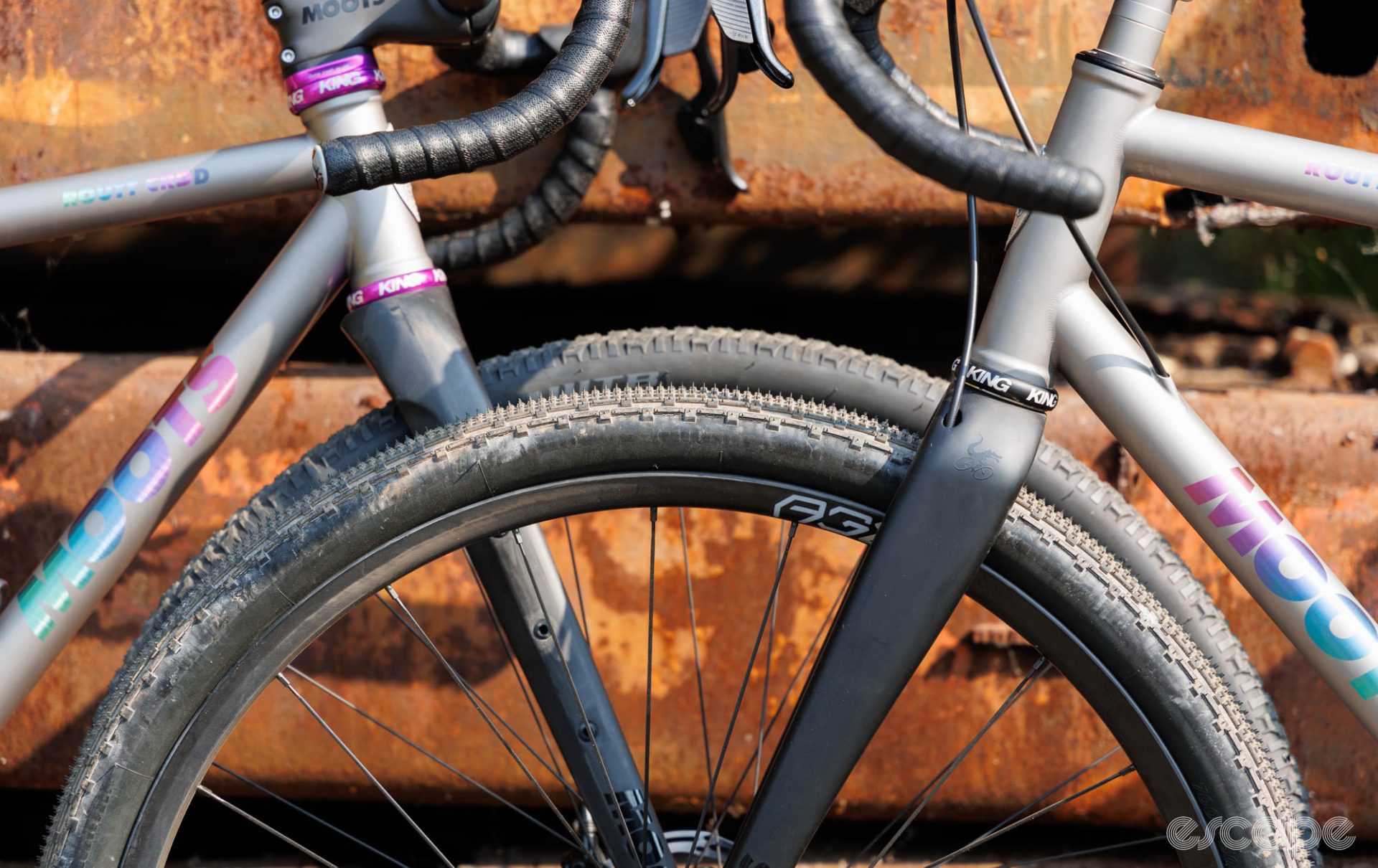
And what about being a wheel size for taller people? “It will obviously be a lot more appealing to taller people, but I don’t think it’ll be an exclusion that it’s only for taller people. I think anyone that can ride at those higher rolling speeds will feel a difference in this versus a 700c wheel.”
“Overall, the rolling momentum and how it floats through stuff, there are improvements there. It’s not blindingly game-changing, but there is a difference. I see it being in that 40c but less tyre range, where you’re going in that 18-23 mph (29-37 kph) pace range in order to gain a lot of the benefit.”
“Is it going to be for everybody? Are we heavily pushing it? Not at all. We just want to try it, we want to mess around with it, and with five gravel bikes in our line-up, and where we’re located, we’re a very gravel-focussed brand now, so we’re trying it.”
Bradley explained that Moots is in no hurry to take orders. “This is still a project of development. We have 21 people at the factory who all ride bikes and all have different opinions, and this is just an exercise of trying new things and being at the forefront of development.”
If it proves to come to market, then clearly, Moots will be ready. The big question remains: which bike brand will be the one to try to make 750D happen for real? And perhaps more importantly, will enough people buy into it for other tyre and wheel manufacturers to take note?
Did we do a good job with this story?
